The India – Nepal border crossing at Panitanki – Kakarbhitta is one of the smoothest border crossings we’ve had on our journey. Here’s how we went from Siliguri (NJP railway station) to Ilam, Nepal, overland using public transport.
The India – Nepal border crossing at Panitanki – Kakarbhitta is perfect for those chilling it in Dajeerling or enjoying the Sikkim tourism circuit. On the Indian side, the closest major city/railway station is Siliguri (NJP railway station), which is a good starting point for your journey.
Where to stay in Siliguri/NJP station area
If your train or bus arrives in the evening, you’ll likely have to stay the night in Siliguri, as the Nepal side of the border crossing is only open until 17:00 (the Indian side is open 24 hours/day because ???).
To make things easier, you can stay at Hotel Breeze, which is within walking distance from New Jalpaiguri (NJP) railway station and costs around 800 Rs for a standard double room, working wifi included. You can also stay in Siliguri, but the city is a 20-minute shared rickshaw ride away from NJP station, and we found it wasn’t worth the effort to go there when we could get a bus to the border from NJP.
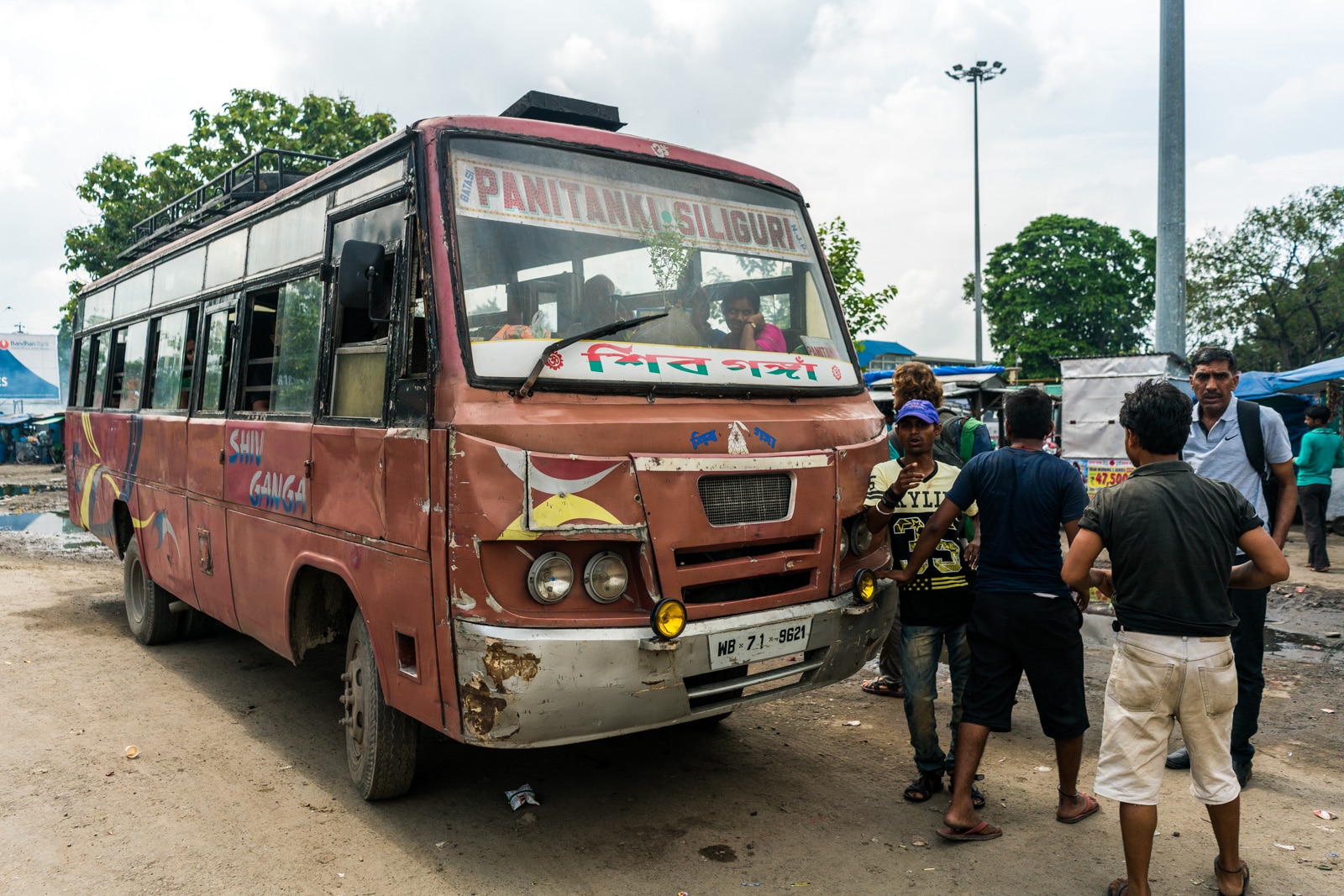
One of the buses to Panitanki, leaving from NJP railway station.
How to get to the India – Nepal border crossing at Panitanki – Kakarbhitta
You can take a bus from the bus station on Hill Cart Road in Siliguri, or from NJP railway station, depending on where you’re staying. If leaving from NJP railway station, look for the small cluster of buses near the end of the parking area outside the station.
Buses go throughout the day (we left at 9:00), leaving when full, and cost 40 Rs per person. The ride takes roughly one hour.
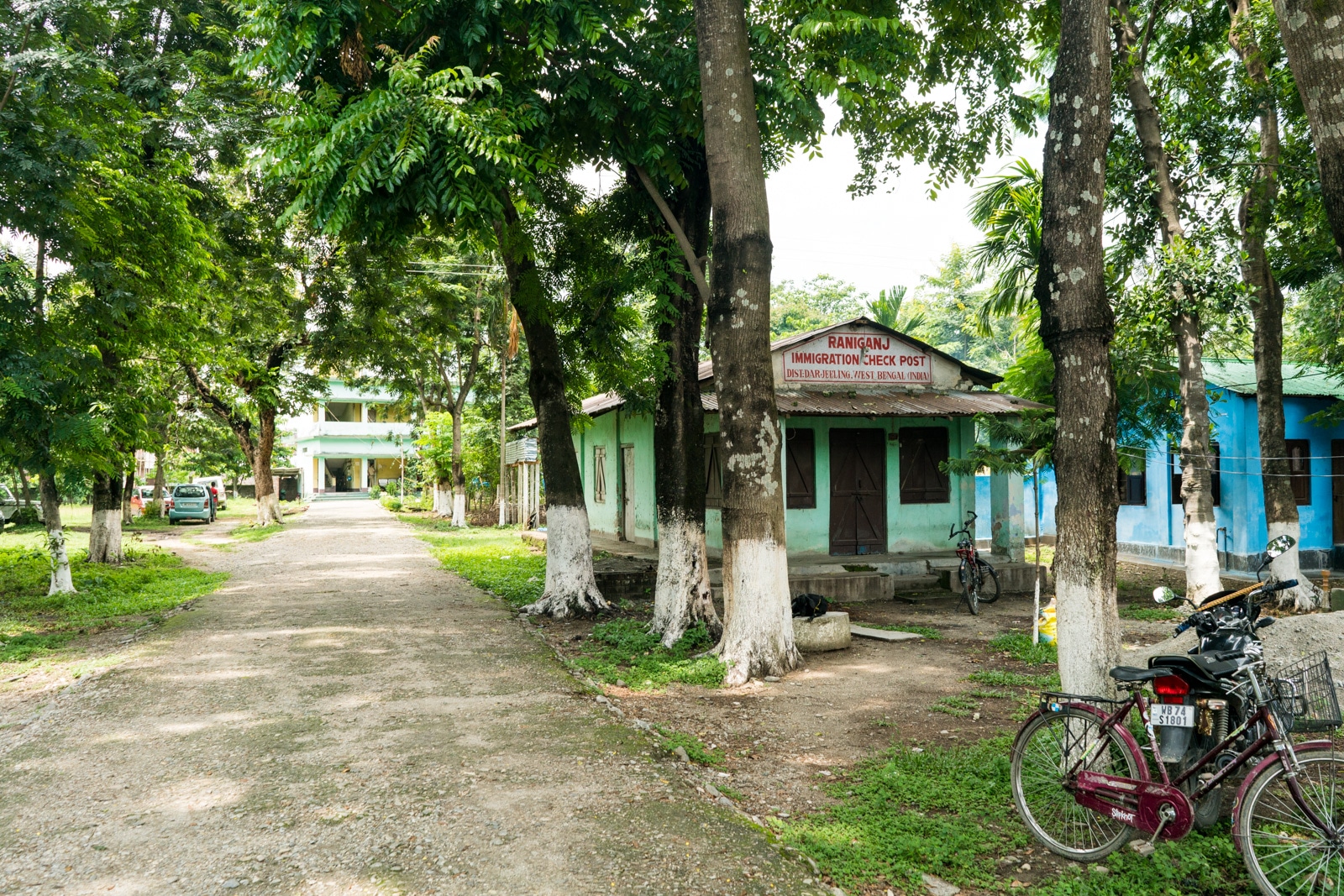
Sneaky stealthy immigration buildings
Indian immigration at the India – Nepal border crossing at Panitanki – Kakarbhitta
If you’re Indian, this border crossing will be a cinch: Indians don’t need to do anything, and can cross the border without reporting to immigration.
Everyone else has to report to immigration. The office is about 10 minutes walking from the intersection where the bus drops you off (or a 20 Rs cycle rickshaw ride). The green concrete building is a bit hidden away in the trees off to the left, but an official will point it out.
At the office, the immigration officer will need a photocopy of your passport and visa, and will note down your information. If you don’t have a copy at hand, there’s a small copy shop close to the immigration office.
After this, your passport is stamped, and you can move to the Nepali side. The whole process takes about five minutes, and there is no hassle.
Need some inspiration? Check out these photos of our time in Nepal!
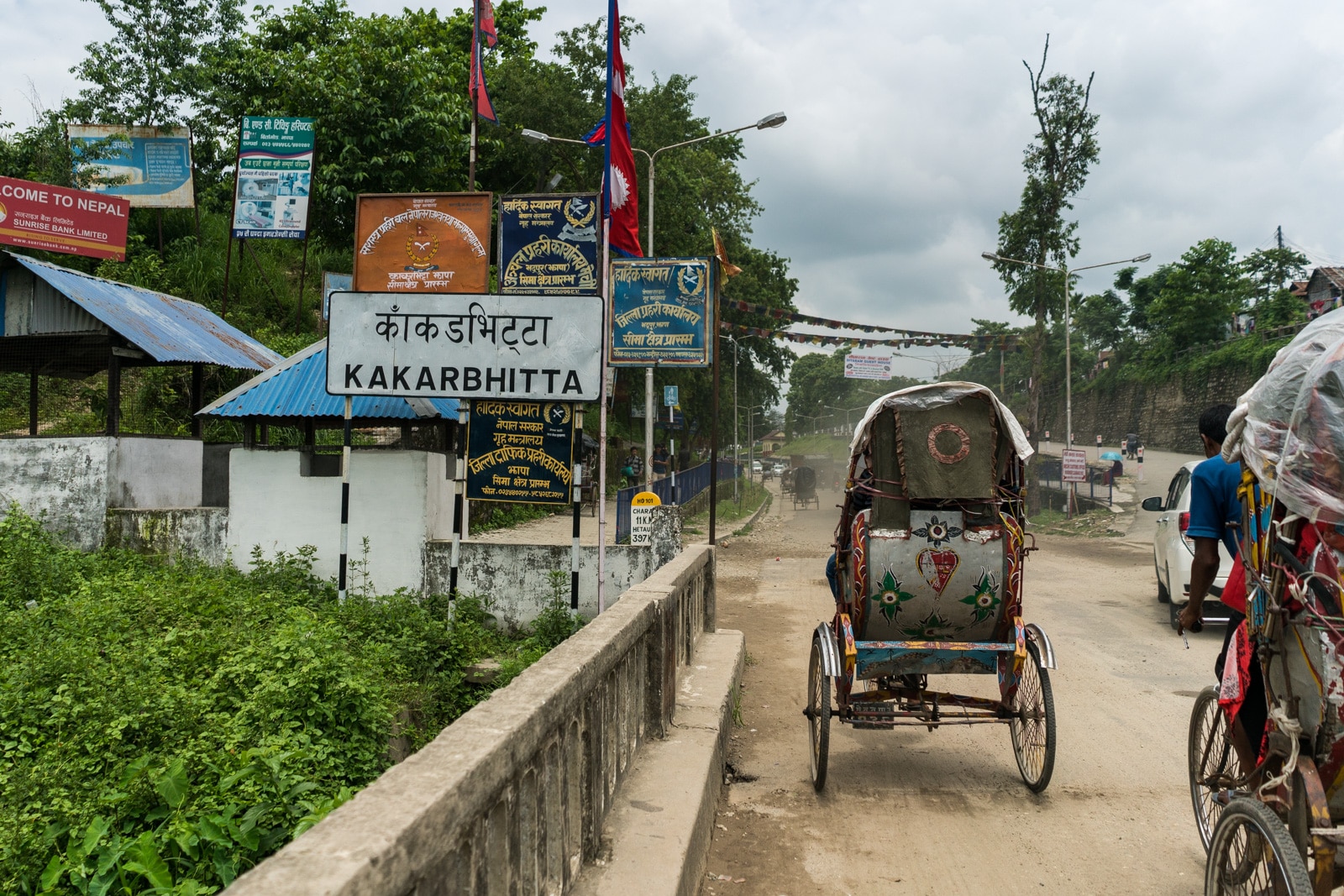
Crossing the India – Nepal border at Panitanki – Kakarbhitta
To head to the Nepali side, you can walk or take a cycle rickshaw. The walk over a bridge is about 10 minutes. If you’re Indian, you don’t have to report to Nepali immigration, but other foreigners have to. The immigration office is to the right up a hill in a big while villa, past the army check post.
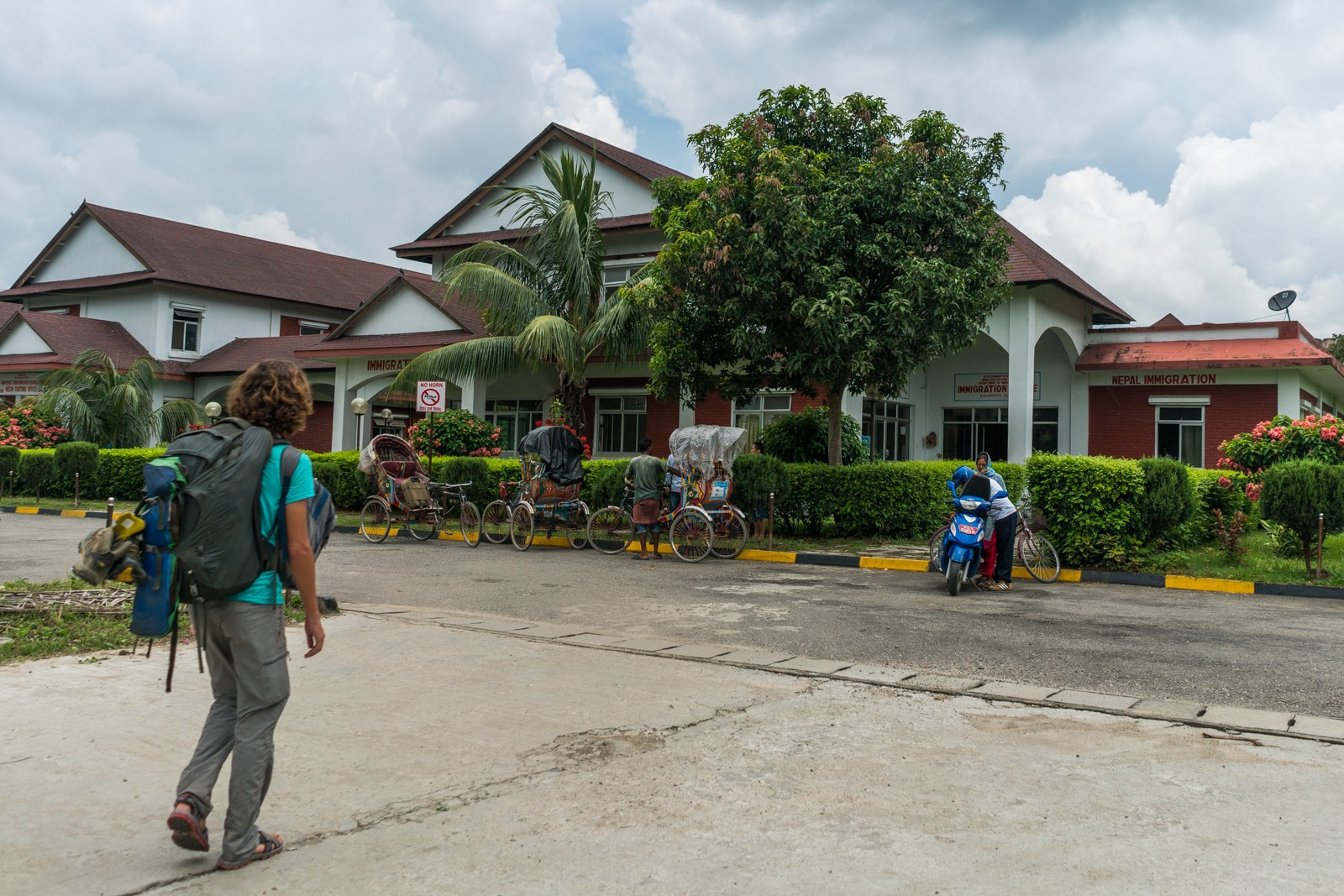
Immigration office on the Nepal side
Getting a visa in Nepal
- Indian citizens: No visa required.
- Citizens of Afghanistan, Cameroon, Ethiopia, Ghana, Iraq, Liberia, Nigeria, Palestine, Somalia, Swaziland, Syria, and Zimbabwe: Apply for a visa in advance in your home country.
- All other nationalities: Visa on arrival.
If you’re getting a visa on arrival, you’ll need to fill in two forms and hand over one passport photo. You can choose between a 15/30/90 day visa for $25/40/100. The fee is payable in US dollars or Indian rupees. Aim to have the exact amount, as there’s not always change on hand.
The whole process takes about 10 minutes. There is no cursory baggage check (in case you have party favors in your bag), and no hassle.
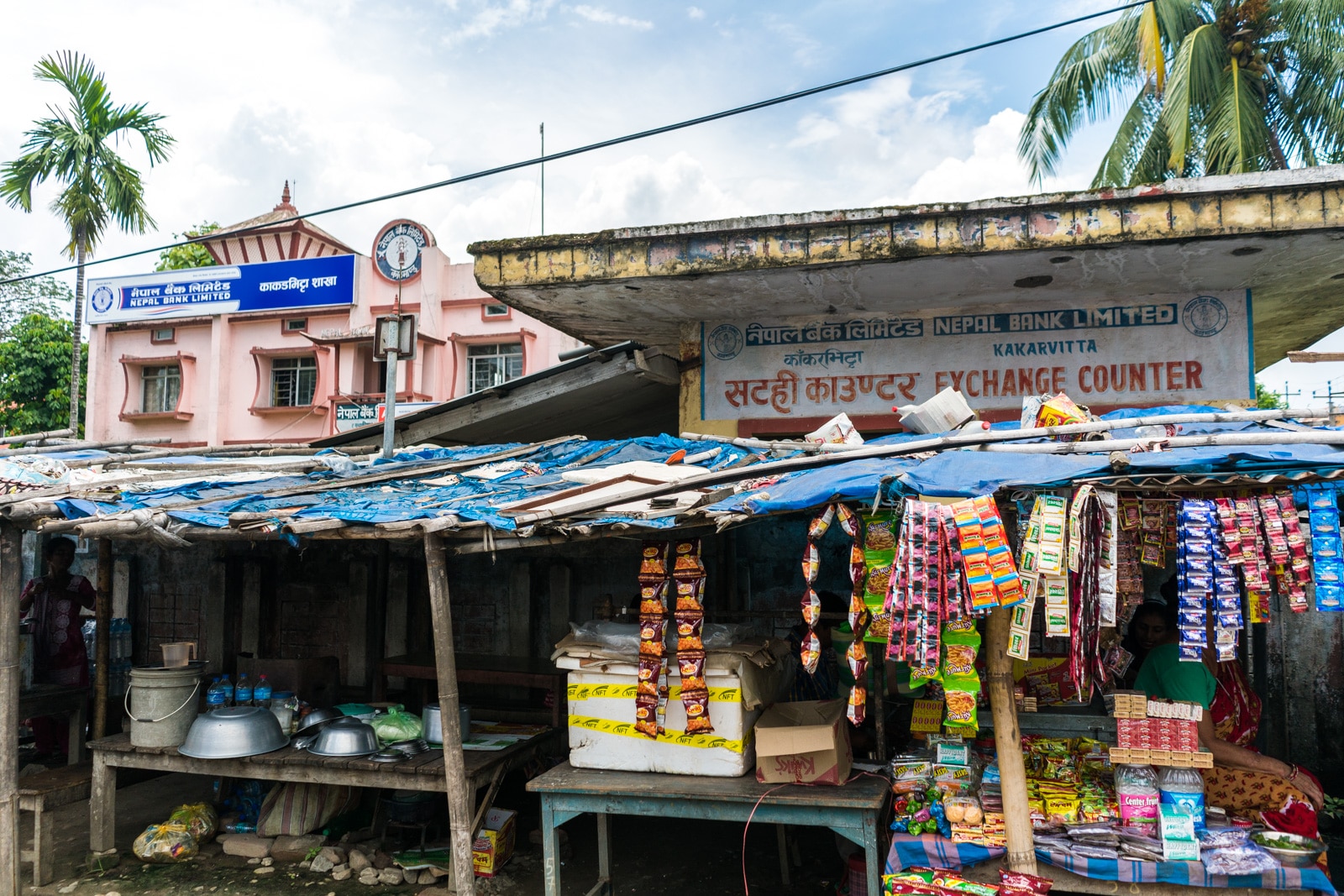
Nepal Bank, where you can change money, is hidden away behind a wall of street vendors
Changing money
There is a Nepal Bank foreign currency exchange roughly 500 meters past the border, on the main road towards the bus stand. The building is easily recognizable, as it’s pink and has a big Nepal Bank sign. There will also be several hawkers outside trying to change money. You can change all major currency here, as well as Indian rupees.
At the time of writing, the official exchange rate was USD$1 =102 Nrs, and €1 = 115 Nrs.
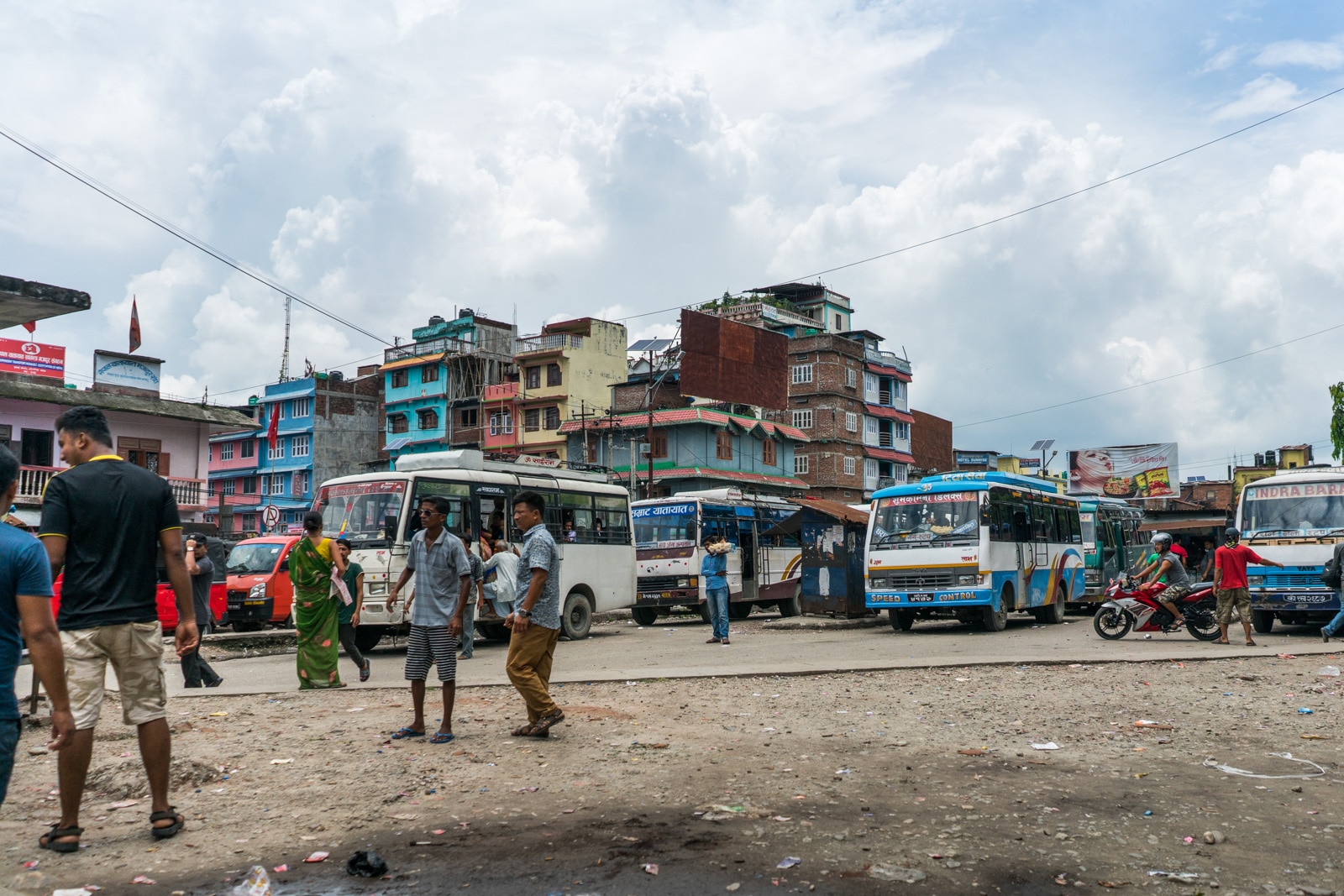
The bus stand in Kakarbhitta
Onwards travel after the India – Nepal border crossing at Panitanki – Kakarbhitta
From Kakarbhitta, you can get buses to Janakpur (7 hours) and Kathmandu (15 – 18 hours). You might have to go to Birtamod first, which is about half an hour from the border.
A bus to Birtamod costs 30 – 40 Nepali Rs per person. Buses to Birtamod depart from a bus stand on the right hand side of the road, about 5 minutes’ walk beyond Nepal Bank. The buses depart when (supremely) full.
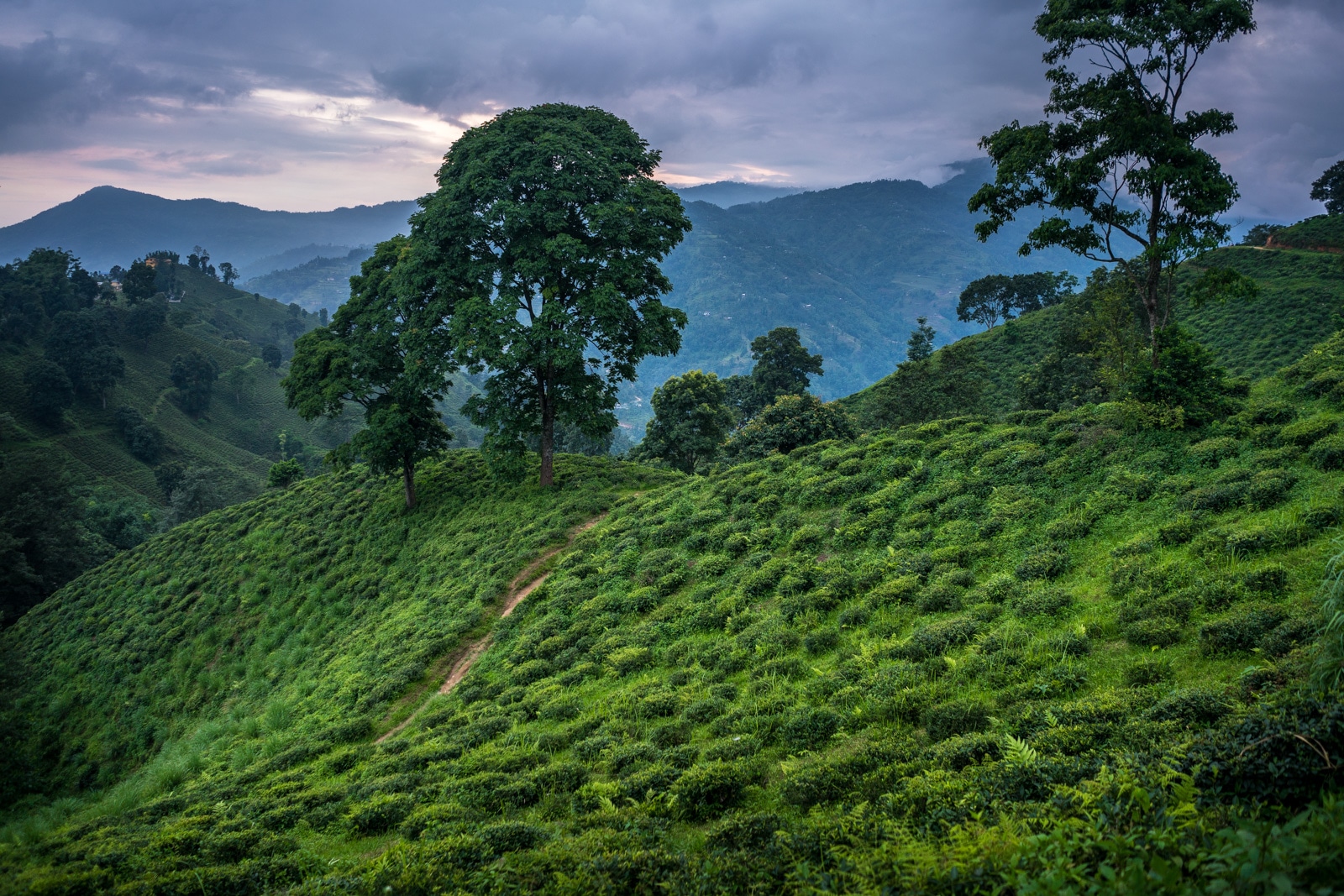
The hills of Ilam
How to get to Ilam from the India – Nepal border crossing
From Birtamod, you can also go to the hill town of Ilam, famous for its tea. The town is relatively off the beaten track, as far as Nepal goes, and it’s a pleasant place to break up your first steps into Nepal. If you’ve visited some tea towns in India, though, you won’t be missing much if you skip it.
A shared Sumo to Ilam takes roughly three hours, and costs 250 Nrs per person.
Safe travels!
There you have it, a quick guide on the India – Nepal border crossing at Panitanki – Kakarbhitta. Remember, you need to have an Indian visa in your passport before doing this crossing in the reverse order. If anything changes, please let us know in the comments!
Yay transparency! There may be affiliate links in this post. If you book or buy something using our links, we’ll make a small commission at no extra cost to you. It’s how we cover the costs of running the blog!
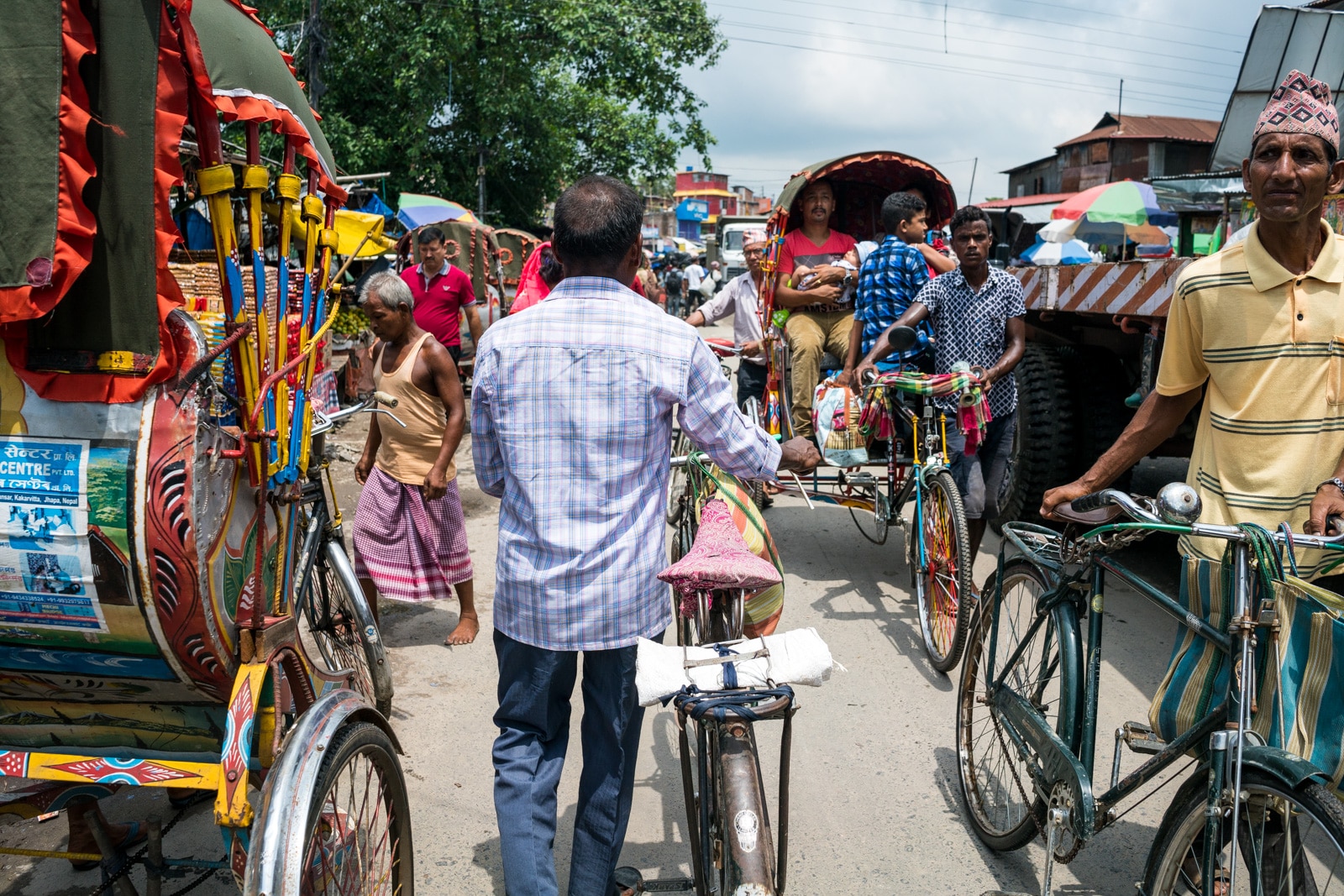


if any American foreigner comes to India ,having international passport and wants to just visit Nepal for couple of hours.Does it need Nepal visa for that foreigner ? and Can he/she come back to India in same day or he/she has to stay in Nepal for 1 day ? Please kindly let me know this .
I am an indian citizen and I don’t have a passport. Can I visit nepal ?
Thanks for all the info. Maybe a quick update. There is a bag scanner on the Indian site now and my stuff had to go through. No personal search. Second 150 km in to Nepal the police control wanted to check only my bags. So be aware about your party gifts as well. I guess it is not worth it
And I took the scenic route North H6 from Bardibras. Very nice indeed.
I hhave got the every information and I understand the rules,But Ido not understand How to convert INDIAN hrupees to Nepal rupees,(If I have AMT card)
Let me know breefly in my E mail.Thank you
Narendranath Rath
matiapada,infront of madhuban 3rd lane
Puri-752002
ODISHA
Could anyone please advise me as to whether the Panitanki Immigration Checkpoint closes for Public Holidays?
According to Google Maps (which calls the checkpoint Raniganj), its opening hours are 09:00-17:00 Tuesday, Wednesday and Thursday.
I aim to be travelling from Nepal into India sometime the week beginning Sunday September 8th. As a Brit, I need to get my passport stamped by Indian Immigration.
I believe that Tuesday 10th and Wednesay 11th are both holidays (Muhurram / Ashura and Onam, respectively.) Is it likely the Checkpoint would be closed on those days?
(Meaning that that week it would only be open on Thursday?)
Any reliable information or good advice would be very much appreciated.
Many thanks
Harry.
Thanks for the info but can I cross from Nepal TO India at Panitanki with a US Passport and an India tourist visa?
I have been to Ilam through Panitanki from Siliguri. The journey was slightly tiresome but it was worthwhile.
Anybody who visits Sikkim, Darjeeling, Siliguri, or places nearby, I definitely suggest them to visit Ilam in Nepal too.
I’m an indian. Can I enter Nepal from India and come back the same day using the Panitanki-Kakarvitta Indo-Nepal border? Thanks and regards. Sugato Chattopadhyay
Foreigners cannot cross the border here since 2020. Indian immigration has closed the land port & will not stamp the passport.
Where did you end up crossing from please? I was hoping to go from Ilam to cross into Sikkim and am thinking now do I have to go back all the way to Kathmandu? Thanks